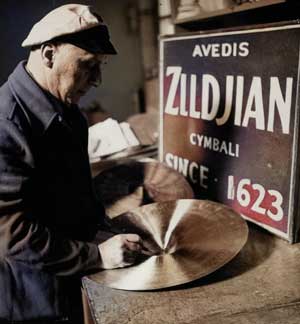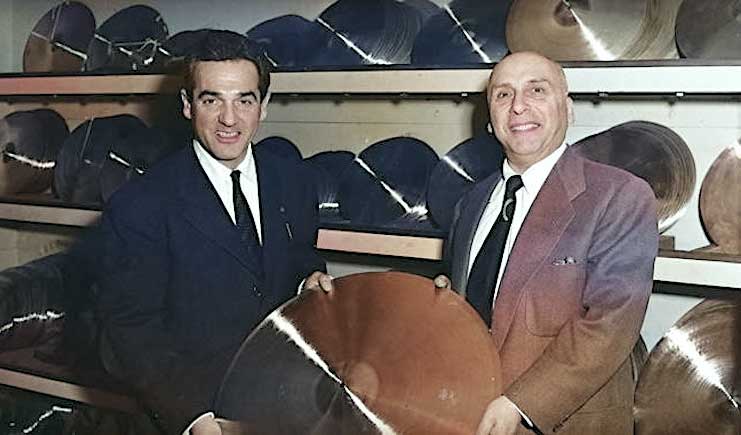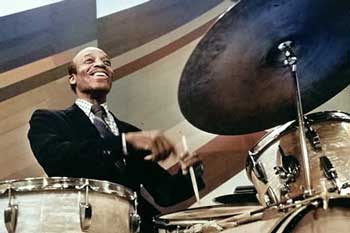The History of Zildjian – How Cymbals as You Know Them Came to Be
Written by Gunnar Egede Kristiansen – 2025

When talking about cymbals, it’s impossible to ignore the name Zildjian. It’s a name that has become synonymous with cymbals – and for good reason. Zildjian can truly be credited with shaping how cymbals look and sound today.
But where does Zildjian actually come from, and why has the brand played such a big role in the development of the modern drum kit? Let’s take a look.
From alchemy to rhythmic revolution
Zildjian was founded all the way back in 1623 in Istanbul and is today one of the world’s oldest family-owned businesses.
It all began with Avedis Zildjian, an Armenian alchemist who accidentally discovered a metal alloy that could withstand repeated strikes while producing a musical tone. The Sultan of the Ottoman Empire was so impressed that he gave Avedis the name “Zildjian,” which means “cymbalsmith” in Armenian (zil = cymbal, dji = maker/doer, an = suffix).
For generations, the Zildjian family crafted cymbals for military bands and court music – but the real turning point came when Avedis III Zildjian emigrated to the United States in the early 1900s.
When jazz changed everything
It’s hard to overstate just how much of an impact Avedis Zildjian III had on the modern drum kit and cymbals’ place in music.
When he arrived in the USA in the early 1900s, Zildjian was already an old company – but it was primarily known for making cymbals for marching and military bands. In fact, the US Army was Zildjian’s first American customer. The cymbals were heavy, and even though Zildjian had always made relatively thin cymbals, they were still far from what we now know as ride and crash cymbals.
But something was stirring. Jazz and dance music were beginning to flourish – people were going out to hear ballroom bands and dance orchestras, and things were evolving towards big band and later jazz combos and bebop.
“I want to be a drummer like you”
Avedis was sharp. He realised that music was changing, and that cymbals had to evolve along with it.
So what did he do? He packed a suitcase with a variety of cymbals and went to a hotel in Boston, where a dance orchestra was playing that evening.
As the drummer was setting up, Avedis approached and said something like: “I want to be a drummer like you – and I’ve borrowed some cymbals from a friend. Are any of these useful for the kind of music you’re playing?”
Genius. A kind of early user testing, you might say.
The drummer opened the case, tried out a few cymbals, closed it again and said: “Don’t waste your time with these, kid – get yourself some Zildjians!”
Probably the last thing he expected to say... to none other than Avedis Zildjian himself.
But the message was clear: Musicians already trusted the Zildjian name – and now, Avedis III fully embraced the opportunity to start developing cymbals together with the top drummers of the era.

Working with Gene Krupa, Chick Webb and Jo Jones
Avedis began reaching out to some of the biggest drumming names of the time – Gene Krupa, Chick Webb, Jo Jones and more. Gene Krupa, in particular, played a key role.
Krupa explained to Avedis that the cymbals were still too heavy for the music drummers were playing. They needed thinner cymbals – cymbals that could be accented and phrased, not just used for static timekeeping.
At that time, much of the timekeeping was still done on the snare drum, so cymbals were often smaller and used more for accents.
Avedis listened. His response was simple: “What do you need? I’ll make it.”
This attitude – to make cymbals for the musicians, not the other way around – is what made Zildjian the brand it is today.
From generic cymbals to ride, crash and hi-hat
Initially, Zildjian’s cymbals weren’t labelled for specific functions. It was up to the drummer to decide whether a cymbal would be used as a ride, a crash, or something else entirely.
But as the needs of drummers evolved, Zildjian – in close collaboration with players – began naming and developing the cymbal types we know today:
• Ride for timekeeping
• Crash for accents
• Hi-hat for groove and pulse
It all stemmed from dialogue with musicians and a desire to move with the music.
A company built on the drummer’s needs

Avedis Zildjian III didn’t just want to make cymbals. He wanted to build a sustainable company that could support the musicians living through a musical revolution.
Without his work – and without the collaboration with the drummers of his time – cymbals wouldn’t look or sound the way they do today.
And it all started with a suitcase, a hotel lobby, and a drummer who just wanted something that sounded right.
➡️ Read more about Zildjian’s history and see their official timeline here
➡️ Learn more about Avedis Zildjian III here
➡️ Read about Zildjian on Cymbal Wiki here
